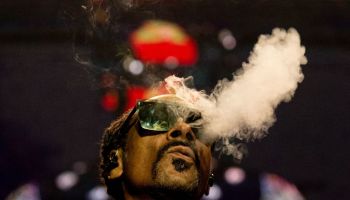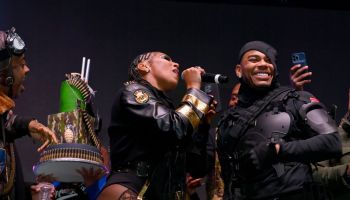National Guardsmen wielding rifles with bayonets advanced along Springfield Avenue in Newark on July 14, 1967. Twenty-three people were killed and 700 injured in the rioting. NY Times/Dan Hogan Charles Photographer *************** The Newark Riot of 1967 began with the arrest of a cab driver named John Smith, who allegedly drove around a double-parked police car at the corner of 7th St. and 15th Avenue. He was subsequently stopped, interrogated, arrested and transported to the 4th precinct headquarters, during which time he was severely beaten by the arresting officers. As news of the arrest spread, a crowd began to assemble in front of the precinct house, located directly across from a high-rise public housing project. When the police allowed a small group of civil rights leaders to visit the prisoner, they demanded that Mr. Smith be taken to a hospital. Emerging from the building, these civil rights leaders begged the crowd to stay calm, but they were shouted down. Rumor spread that John Smith had died in police custody, despite the fact he had been taken out the back entrance and transported to a local hospital. Soon a volley of bricks and bottles was launched at the precinct house and police stormed out to confront the assembly. As the crowd dispersed they began to break into stores on the nearby commercial thoroughfares. Eventually violence spread from the predominantly black neighborhoods of Newark’s Central Ward to Downtown Newark, and the New Jersey State Police were mobilized. Within 48 hours, National Guard troops entered the city. With the arrival of these troops the level of violence intensified. At the conclusion of six days of rioting 23 people lay dead, 725 people were injured and close to 1500 people had been arrested. A variety of factors contributed to the Newark Riot, including police brutality, political exclusion of blacks from city government, urban renewal, inadequate housing, unemployment, poverty, and rapid change in the racial composition of neighborhoods. For residents of Newark’s predominantly black Central Ward, the police were a persistent, if not entirely welcome presence. Patrolmen, who were mostly of Irish and Italian descent routinely stopped and questioned black youths with or without provocation. During the decade preceding the riot, several high profile cases of police brutality against young black men were reported, some resulting in death. In July 1965, Lester Long, aged 22, was shot and killed by police after a “routine” traffic stop. A few weeks later, Bernard Rich, a 26-year old African-American male, died in police custody under mysterious circumstances while locked in his jail cell. On Christmas eve that year, Walter Mathis, aged 17, was fatally wounded by an “accidental” weapons discharge while being searched for illegal contraband. Despite calls for the appointment of a civilian police review board and hiring of more African American policemen, such proposals went unheeded. Police-related shootings and beatings for the most part were not prosecuted; Few cases of police abuse in Newark ever made it to a jury. The mutual suspicion and hostility that characterized the relationship between black citizens and the police in Newark were matched by feelings of political powerlessness and acrimony toward political officials. Black residents of Newark were not only underrepresented on the police force, but were also sorely absent from the corridors of political power. This disparity of political power was self-evident in Newark, when Mayor Hugh Addonizio, who had professed sensitivity to black concerns during his election campaign, failed to appoint blacks to leadership positions in his administration. Most tellingly was the manner with which the mayor handled a school board vacancy by appointing an Irish high school graduate, Councilman James T. Callaghan over Wilbur Parker, the first African-American certified public accountant in the State of New Jersey. Further contention resulted















